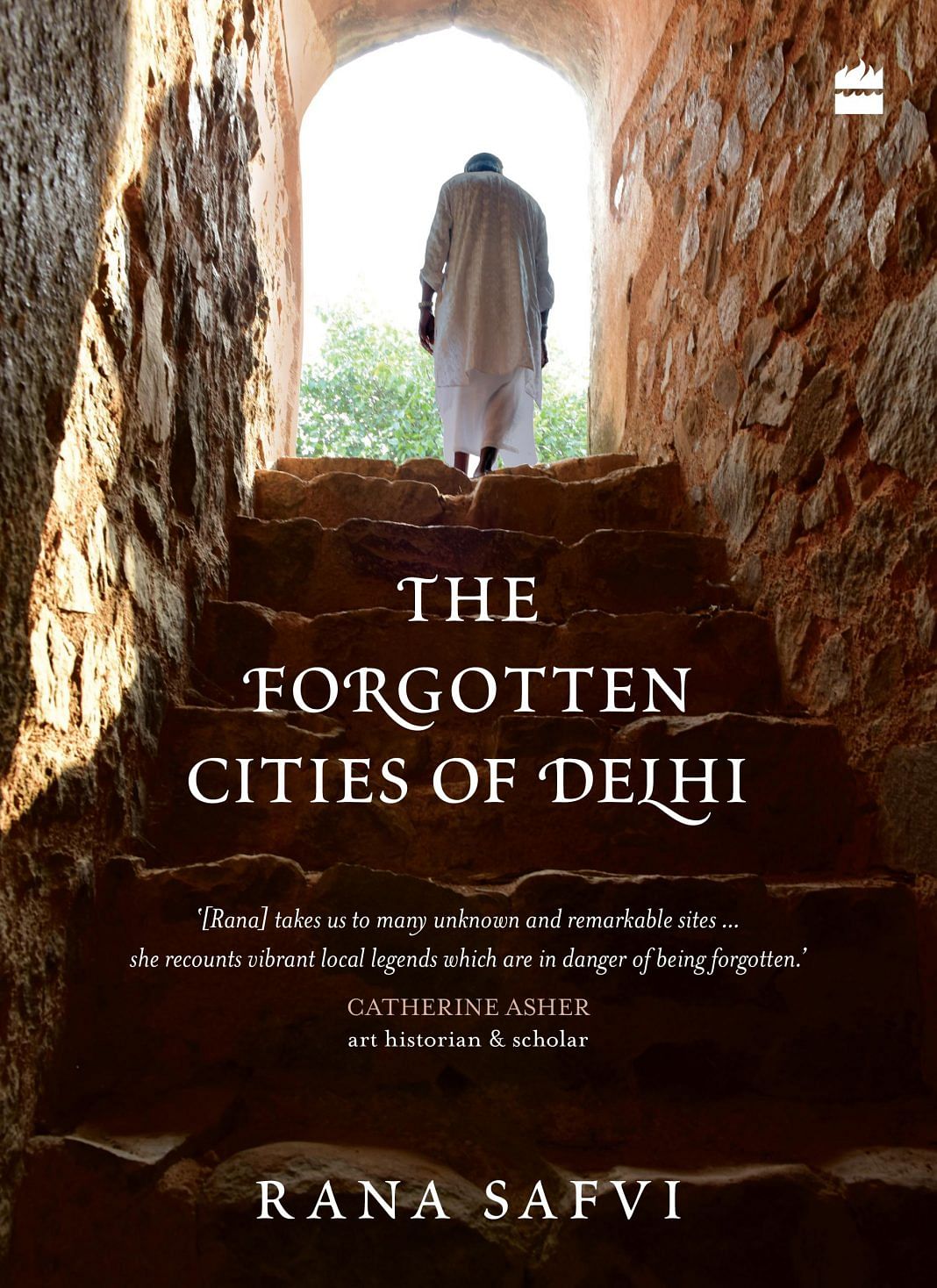
Forgotten Cities of Delhi blends the historical facts behind each ‘hidden-in-plain-sight’ structure with anecdotes, legend and Sufi couplets.
Na Sikandar hai na Dara hai na Qaiser na Jam
Be-mahal khaak mein hain qasr banane waale
(Neither Alexander, nor Darius, nor Caesar or Jamshed remain
The builders of palaces under the open skies in dust) are lain
– Barq Mirza Raza
A passionate new book detailing Delhi’s ancient but forgotten forts, tombs, baolis is an obvious labour of love. But the real magic happens when you read finely curated Sufi couplets along with the descriptions of the historical structures.
Historian and translator Rana Safvi’s The Forgotten Cities of Delhi is a handy addition to the popular literature on the capital’s richly layered, 1,500-year history.
The tombs, forts, baolis, walls, and shrines of Delhi’s ancient cities, where kings, poets, and mystics walked are now silent and often careworn witnesses to traffic and manic ‘development’.
Sections divided on the geography map these ancient cities now spread across modern India’s capital, with each segment listing a large number of surviving structures. The Forgotten Cities blends the historical facts behind each listed structure with anecdotes and legend. There are detailed, yet simple explanations of the architectural styles and traditions that prevailed during each historical period, starting with the Tomar dynasty in the 10th century, through the Muslim-rule era of the Khiljis, Tughlaqs, and Lodis and on to three centuries of Mughal domination – a vast canvas.
Adding charm to the descriptions of various historical structures are finely curated Sufi couplets. Be it the one quoted above on Firoz Shah Kotla or another that appears to foretell the fate of the once impressive Khirki Masjid:
Woh masjid ghar na ban jaaye kisi ka
Namaaze’n band hain khaali padi hai
(Alas! That mosque may become someone’s residence
No longer are prayers held there, what echoes there is silence)
– Sardar Asif
But The Forgotten Cities isn’t merely a nostalgic ode to the national capital’s past. Safvi’s straight-bat style, part documentary and part plea for the preservation of Delhi’s legacy points to the general apathy of the powers that be and its citizenry towards this priceless heritage.
UNESCO honours be damned, centuries old structures have been swallowed up by deathly dull stacks of concrete. Elsewhere, the palaces of former kings now offer dingy shelter to feckless youths who gamble and smoke up with happy abandon in these lost spaces.
This sad state of affairs notwithstanding, Safvi’s own adventurous spirit and her concise documentation of innumerable, lesser-known heritage structures make for inspired reading. And a call for action, too. There’s a nice, ‘carry along’ feel to the book. So, on a sunny weekend, tuck a copy in your backpack, lace up those walking shoes and set out to discover Delhi’s historical treasures. They’re hiding in plain sight.
Poornima Narayanan is a Delhi-based freelance writer and editor.

COMMENTS